
Review: Roosevelt and Holocaust: How FDR Saved the Jews and Brought Hope to a Nation
This reviewer read Robert L. Beir’s Roosevelt and Holocaust: How FDR Saved the Jews and Brought Hope to a Nation – to find out if the subtitle was intended as irony.
The author admits to admiring President Roosevelt. He had, (and has) plenty of company. Many, if not most American Jews idolize Roosevelt for saving the Jews from the Holocaust. Beir’s book makes that assertion doubtful.
Such was Beir’s enthusiasm that he taught a high school course about FDR. One day, apparently challenging Beir’s hagiography, a student asked: “What about the SS St. Louis?” Beir did not know what about the St. Louis prompted the question. The following is a short version of what he discovered.
In the spring of 1939, the SS St. Louis set out from Hamburg, Germany for Cuba with 937 Jews on board, 400 of them women and children. Almost all were escaping oppression in the Third Reich. They paid the fares, paid the Cubans for landing permits, even paid the Nazis an additional 230 Reich marks ($92) for the return trip… should something go wrong. Something did.
The St. Louis dropped anchor in Havana harbor early on a Saturday morning. Immigration officers boarded and exited for several days. Nine hundred and eight were refused entry. The ship was ordered to leave or face the consequences from the Cuba Navy.
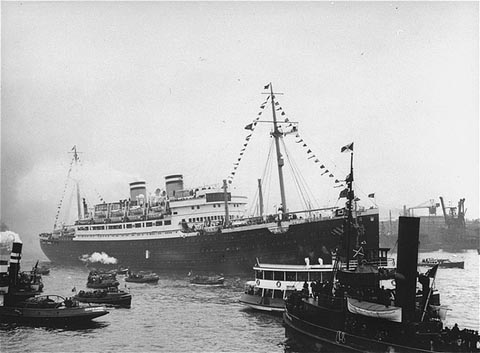 https://en.wikipedia.org/wiki/MS_St._Louis
https://en.wikipedia.org/wiki/MS_St._Louis
The St Louis sailed slowly up the North American coast. Distraught passengers sent telegrams to the U.S. State Department and President Roosevelt. The State Department refused to intervene. Roosevelt did not respond. Thirty percent of the St. Louis’s passengers perished in concentration camps.
The author asks:
Why weren’t temporary visas issued? Why wasn’t an executive order signed?
How could he ignore the plight of the refugees? Where was the great humanitarian?
More research produced more questions, and this book.
Nazi Policies and the Jews
After Adolph Hitler became Germany’s chancellor in January 1933 he initiated policies targeting Jews. The 1935 Nuremberg Laws “forbade marriages and extramarital intercourse between Jews and Germans….” The Reich Citizenship Law declared “only those of German or related blood eligible to be Reich citizens.” Jews and Gypsies were classified “enemies of the race-based state.“ Other decrees included “outlawing Jewish children from attending public schools, and denying Jews the right to work…Jews Not Admitted” signs proliferated outside grocers, butcher shops, bakeries and dairies.
On March 12, 1938, Nazi troops invaded Austria. Austrians welcomed them with celebrations. Masada like, hundreds of Jews committed suicide.
For the first few weeks the behavior of the Vienna Nazis was worse than anything I had seen in Germany, William L. Shirer reported.
There was an orgy of sadism. Hundreds of Jews, men and women, were picked off the streets and put to work cleaning public latrines and the toilets of the barracks where the SA and the SS were quartered. Day after day large numbers of Jewish men and women could be seen scrubbing the sidewalks and cleaning the gutters. While they worked on their hands and knees with jeering storm troopers standing over them, the crowds gathered to taunt them. Tens of thousands more were jailed….
Some were able to leave by surrendering businesses and possessions to the Reich. Many were not. Hundreds of thousands applied for American visas.
Evian Conference – July 6-15, 1938
In the U.S. pressure mounted to increase the number of emigrants permitted by existing laws. President Roosevelt responded by inviting 32 nations to convene in Evian, France. Their task was to find safe havens for the Jews. Roosevelt appointed Myron C. Taylor, chairman of the Board of U.S. Steel, to lead the American delegation. Taylor was unfamiliar with refugee issues and had no connection to the government.
What message was Roosevelt sending by appointing an unelected outsider to such an enormous and important mission?
Why didn’t Roosevelt appoint a knowledgeable insider, such as Congressman Emanuel Cellar or Undersecretary Wells or James McDonald who became the chairman of the President’s advisory committee on political refugees?
The attendees expressed sympathy for the Jews, but that was all. “Country after country came forward with a reason for not accepting Jewish immigration.” Hitler gloated. The German government found it astounding that foreign countries criticize Germany’s treatment of the Jews, but none want them. The United States offered to fill the existing quota of 27,370 refugees per year. “The reality was ten thousand less than the legal limit.”
If this is coming to the help of the refugees, Britain’s daily Herald editorialized, then what would the nations do if they meant to desert them?
In November of 1938, the German government rounded up eighteen thousand Jews throughout Germany and shipped them in cattle cars to Poland. The pogrom, known as Kristallnacht (Night of Broken Glass), followed. After a night of terror, more than 30,000 Jews (10% of the overall population) were arrested and sent to concentration camps.â€
At the Vatican, Pope Pius the XI voiced no outrage nor did his successor, Pope Pius XCII.
Was the Vatican’s silence a clear message to Hitler’s government that the appeasement policies of the West would continue? The same question could have been asked of President Roosevelt.
At first Roosevelt made no public statement about Kristallnacht. He told reporters to “take their questions to the State Department.” Five days later, urged to condemn the terror, he called a press conference and expressed his indignation.
How far did his indignation go?
Nothing changed in foreign policy. Nor did the President instigate an intervention-based coalition of nations. With no serious international interference Hitler’s government continued along its chosen path.
Once the war began, Hitler ended Jewish expulsion. They became prisoners of the Reich.
Not a propitious time in America for rescuing Jews
As the 1930s turned into the 1940s there were 30 million unemployed Americans. Labor leaders blamed foreigners willing to work for minimum wages. KKK membership swelled to nearly 5 million…Preacher Gerald L. K. Smith, launched his anti-Semitic magazine ‘The Cross and the Flag.’ He ran    for U. S. senator in the state of Michigan and formed the America First Party. The One Hundred Percent American movement launched and called for Anglo-Saxon purity, excluding all others of ‘doubtful origin.’ Mississippi Democrat John Rankin called the news columnist Walter Winchell ‘that little kike’ on the House floor. Neither Congressional censorship nor public rebuke followed his comments.
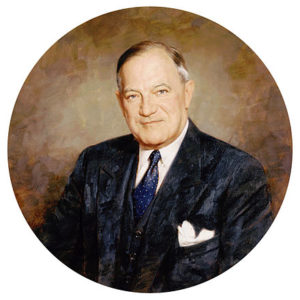 In the spring of 1939, New York Senator Robert E. Wagner and Massachusetts Representative Edith Nourse Rogers introduced the Wagner-Rogers Bill. The Child Refugee Bill, as it was also known, would admit German children for a temporary period, or “until safe living conditions were re-established.” The bill called for admitting ten thousand children in1939, most of them Jewish and all of them under the age of fourteen, and another ten thousand in 1940. The children would be admitted outside the quota system. Wagner reasoned that “admitting the children within the quota would push out German adults in despair.“ Â
In the spring of 1939, New York Senator Robert E. Wagner and Massachusetts Representative Edith Nourse Rogers introduced the Wagner-Rogers Bill. The Child Refugee Bill, as it was also known, would admit German children for a temporary period, or “until safe living conditions were re-established.” The bill called for admitting ten thousand children in1939, most of them Jewish and all of them under the age of fourteen, and another ten thousand in 1940. The children would be admitted outside the quota system. Wagner reasoned that “admitting the children within the quota would push out German adults in despair.“ Â
To make the Child Refugee Bill more palatable to the mainstream, the children would not be allowed to work, and under no circumstances would they become public charges. All financial arrangements regarding the shipping and care of these children would be privately paid. To that end, the American Friends Service Committee (the Quakers) called on families to open their homes.
Within 24 hours, four thousand American families did so. Radio stations and newspapers were swamped with offers. Jewish agencies promised to subsidize in-home costs. In short, the immediate response to the Child Refugee Bill was enormous.
But public opinion polls revealed a different attitude.
A poll taken in January of 1939 outlined the provisions of the legislation and asked: “Should the government permit these children to come in? Of those polled, 61 percent were against entry, with 9 percent voicing no opinion.” Hostile congressional testimony reflected “fear of Jews, fear of immigrants, fear that the 20,000 German children might eventually mean the inclusion of those children’s parents.”
Many influential Americans came forward to support the Child Refugee Bill, among them the First Lady. In fact, Eleanor Roosevelt became one of the sponsors.
Did the President agree? In a telegram to his wife sent while vacationing on board the USS Houston, Roosevelt wrote, ‘It is all right for you to support the bill, but it is best for me to say nothing.’
But he did do something. In the margin of a letter urging him to act he wrote File No Action… Here again, the war hadn’t started. Nazi Germany was not his sole focal point. Couldn’t he have used the bully pulpit to influence the debate in Congress?
The Child Rescue Bill died in committee in the summer of 1939.
Only a vigorous campaign by the President might have saved the bill.
Breckenridge LongÂ
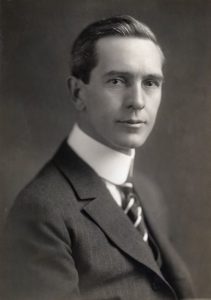 In January of 1940 Roosevelt promoted Breckenridge Long, a good friend and campaign contributor, to Assistant Secretary of State. In that policy-making position, Long oversaw twenty-three of the forty-two divisions, including passports and visas. The State Department’s Visa Division, which Long supervised, slowed immigration to the United States for the hundreds of thousands of refugees attempting to escape persecution and murder by Nazi Germany. Breckenridge Long, known for his obsession with spies and antipathy toward Jews, all but cut off immigration when it was most needed. In a June memo, distributed to the State Department, Long outlined his policy and the strategy behind it.  Â
In January of 1940 Roosevelt promoted Breckenridge Long, a good friend and campaign contributor, to Assistant Secretary of State. In that policy-making position, Long oversaw twenty-three of the forty-two divisions, including passports and visas. The State Department’s Visa Division, which Long supervised, slowed immigration to the United States for the hundreds of thousands of refugees attempting to escape persecution and murder by Nazi Germany. Breckenridge Long, known for his obsession with spies and antipathy toward Jews, all but cut off immigration when it was most needed. In a June memo, distributed to the State Department, Long outlined his policy and the strategy behind it.  Â
We can delay and effectively stop for a temporary period of indefinite length the number of immigrants into the United States. We can do this by simply advising our consuls to put every obstacle in the way and to require additional evidence and to resort to various administrative devices which would postpone and postpone and postpone the granting of visas …
Long’s policy decisions were sent to diplomatic and Consular officers on June 29. A satisfied Long wrote in his diary, the cables practically stopping immigration went! In another entry, following a meeting with the President on October 3, 1940, he wrote, “I found that he was 100% in accord with my ideas.”
It is difficult to argue, given their many years of association, that Roosevelt did not know Long’s biases. Roosevelt had been briefed…in a sense…by his wife in 1940.
 ‘Franklin,’ she said, ‘you know he’s a fascist.’
‘ I’ve told you, Eleanor’, the President responded,’you must not say that’.
‘Well, maybe I shouldn’t say it,’ Eleanor replied, ‘but he is!’
And so immigration to the United States… already significantly below legal limits even before his appointment, underwent a drastic reduction. For example, the German-Austrian quota in the years 1939 and 1940 basically had its allocation filled. In 1941, immigration dropped below 50 percent of the legal limit. In 1942, immigration dropped below 18 percent of the legal limit. From 1943 to the end of the war, immigration dropped below 5 percent.
France unconditionally surrendered to Germany on June 22, 1940. The French government “agreed to surrender on demand all Germans named by the German Government in France as well as in French possessions, colonies, protectorate territories and mandates.”
The implications were clear: hundreds, if not thousands, of political refugees who had fled Germany for France during the rise of the Nazi Reich were suddenly in horrific danger.
Emergency Rescue Committee
Because of U.S. inaction, Jewish organizations met in New York in late June 1940 to form the Emergency Rescue Committee (ERC). The committee needed money, visas, passports, and someone in France to help the refugees get out.
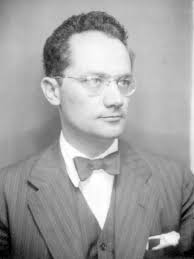 Varian Fry1. a 32-year-old American journalist, volunteered. He arrived in Marseilles in August 1940 with $30,000; access to emergency visas and an ERC list of endangered artists, writers, and scientists.
Varian Fry1. a 32-year-old American journalist, volunteered. He arrived in Marseilles in August 1940 with $30,000; access to emergency visas and an ERC list of endangered artists, writers, and scientists.
The visas were the result of an earlier meeting between ERC delegates and Eleanor Roosevelt. The delegates were present when she phoned the President. When, after twenty minutes, he still refused to grant the visas, she hung up. But not before she threatened:
 If Washington refuses to authorize these visas immediately, German and American émigré leaders with the help of their American friends will rent a ship, and in this ship will bring as many of the endangered refugees as possible across the Atlantic. If necessary the ship will cruise up and down the East Coast until the American people, out of shame and anger, force the President and the Congress to permit these victims of political persecution to land. Within a month President Roosevelt authorized emergency visas for prominent foreigners.
The number of refugees pleading for Fry’s help far exceeded his emergency visas. With great risk to himself, Fry organized and ran a rescue network of volunteers. It included wealthy benefactors, smugglers, black-marketers and forgers, among others. Fry set up escape routes and recruited guides. If none was available he did the guiding. The network helped approximately 2,000 to 4,000 anti-Nazi and Jewish refugees escape. He received no help from the American Consul.
Throughout Fry’s stay in France, the State Department plotted against him. Covertly, the Department worked to revoke Fry’s visitor visa while applying pressure on the ERC to recall their envoy.
The State Department received eyewitness reports that annihilation of Jews was official Nazi policy and taking place in camps built for that purpose. In the summer of 1942, Dr. Gerhart Riegner, the World Jewish Congress representative in Switzerland, warned London and Washington about the start of the Holocaust. The reports were not made public.
Bermuda Conference April 30, 1943
By the end of 1942, Nazi’s efforts to exterminate European Jewry could no longer be hidden. Jewish groups in the United States and Britain urged their governments to act. To quiet public outcry the two governments planned a conference in Bermuda. Reporters were discouraged from attending, and the sponsoring nations carefully selected participants and controlled the agenda. The conference concluded without a rescue plan.
According to one observer: “The job of the Bermuda Conference apparently was not to rescue victims of Nazi terror, but to rescue our State Department and the British Foreign Office.”
The voice missing, the voice that could have pressed for action belonged to the President.
America entered the war after the Japanese bombed Pearl Harbor on December 7, 1941. Germany declared War on the US on Dec. 11. Roosevelt now answered rescue pleas by stating what became official US policy: The best way to help the Jews was to win the war.
Roosevelt did not take a pro-rescue position. Not in 1942 following the Riegner Report. Not in the summer of 1943 following his meeting with Jan Karski2 and not when the Gillette-Rogers Rescue Resolution3 gained support in the autumn of 1943. Only in 1944, when Secretary of he Treasury Henry Morgenthau went to him with an 18 page report detailing State Department obstructions and conspiracies,4 only when Congress was on the verge of passing Gillette-Rogers, did Roosevelt sign Executive Order 9417 on January 22, 1944 implementing the War Refugee Board.
From the beginning the WRB was handicapped in its rescue efforts. Its powers weren’t broad enough. It lacked financial backing. It received little assistance. For instance, few havens opened for the refugees… One or two opened in North Africa. The United States opened a camp at Fort Ontario in Oswego. No other empty army barracks in America were used. ‘The real hurdle’ Arthur Morse wrote in While Six Million Died, ‘was the White House…The President said that it would not be necessary to establish havens in the United States because there were many countries to which the refugees could go.’
War Rescue Board
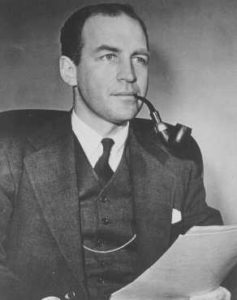 The WRB was to take all measures within its power to rescue the victims of enemy oppression who are in imminent danger of death and otherwise to afford such victims all possible relief and assistance consistent with the successful prosecution of the war.â€
The WRB was to take all measures within its power to rescue the victims of enemy oppression who are in imminent danger of death and otherwise to afford such victims all possible relief and assistance consistent with the successful prosecution of the war.â€
It took two weeks before Roosevelt signed off on a Director. Meanwhile, the trains continued to depart from points throughout Europe for Auschwitz. On February 3, a train carrying 1,214 Jews left France for Auschwitz, Nine hundred and eighty-five of those people died in the gas of Auschwitz. On February 8, a train carrying one thousand Jews left Holland. Eight hundred of those people, including all the children, died in the gas of Auschwitz.
How many did the Board manage to save? No records were kept. Some estimates run as high as 200,000. No official efforts were made to rescue any of the remaining 6 million Jews the Nazis murdered.
What exactly could he have done? Perhaps the simplest yet most profound answer came from Congressman Emanuel Celler, who blamed Roosevelt for not providing “some spark of courageous leadership.†Grudgingly, I agree. Â
On November 8, 1944, WRB director John Pehle, after reading the translated eyewitness reports of the killings in Auschwitz… strongly urged the US War Department to have the gas chambers bombed…the War Department responded that the plan was not feasible and would divert Allied strategic air forces from vital military targets, arguing that the best way to save lives at Auschwitz would be to defeat Nazi Germany as quickly as possible.  Roosevelt’s policy reprised.
Yet, within a week, the US Army Air Force carried out a heavy bombing of the I.G. Farben synthetic oil and rubber (Buna) works—less than five miles from the Auschwitz-Birkenau killing center.
Space prohibits including all of Beir’s enumeration of FDR’s sins of omission and commission. It is not an easy book to read, and not only because of the content. Roughly the first half of the book is autobiographical and includes Beir’s personal and familial encounters with anti-Semitism before and during the war. The rest of the book is a history of the same period. Better editing would have eliminated the tedious repetitions and disrupted chronology imposed by that organization.
Having laid out the indictment, Beir proceeds to the defense. In Chapter 23, Why I Call Myself a Rooseveltian.the author catalogs Roosevelt’s accomplishments during a time of domestic turmoil and danger from abroad
Why am I still a Rooseveltian? I see the man’s prescience. In 1937, he took a stab at warning the world. In his Quarantine Speech he condemned the ‘10 percent who are threatening a breakdown of all international order and law.’ He reasoned that the other 90 percent ‘must find some way to make their will prevail.’ To an isolationist nation, his speech was a major risk. He gave it anyway. For that action, I admire his insight, judgment, and courage.
Why am I still a Rooseveltian? I admire the man’s creativity. In 1940-1941, Great Britain was broke and the Nazi Air Force was pummeling London nightly. Churchill cabled Roosevelt regularly, desperate for assistance. Roosevelt, in the face of American neutrality and isolation, wondered how to keep Britain afloat… Isolationist sentiment ran high in America In 1937 when Congress passed and the President signed the second Neutrality Act. This was Roosevelt at his creative best. Lend-Lease4 saved both Great Britain and Russia and, in return, made America much stronger. Could he have used some of his creativity for rescue? The question is hypothetical. Â
Roosevelt’s leadership galvanized the war effort. Sacrifice to the great cause became a way of life. These were the days of rationing. There were shortages of butter and sugar, tires, and gasoline. These were the days of the seven-day workweek. These were the days of housing scarcity, of workers sharing “hot beds,†with shifts of workers crowding into rooming houses. .
The author’s search for the truth about Roosevelt produced this book. What he discovered was a wrenching disappointment. Roosevelt’s failure to help the passengers aboard the St Louis predated the war, as did other instances when help could have been proffered and wasn’t. Roosevelt’s detachment and Long’s malevolence may have abandoned more to death than the WRB was able to save. But this is not a numbers game. Their lack of empathy is chilling.
This reviewer will not debate the author’s assertion that Roosevelt was a great wartime leader. It is not germane to his probity. This writer does not countenance the view that greatness trumps morality. Greatness is not absolution
So what about the subtitle? This reviewer believes it was the author’s attempt to attenuate what his book reveals. It rings false because it is.
_Â Â Â Â Â Â Â Â Â Â Â Â Â Â Â Â Â Â Â Â Â Â Â Â Â Â Â Â Â Â Â Â Â Â Â Â Â Â Â Â Â Â Â Â Â Â Â Â Â Â Â Â Â Â Â Â Â NotesÂ
1.Varian Fry
He was the member of the Emergence Rescue Committee who volunteered to rescue a group of intellectuals trapped in Vichy France after the French government surrendered. He was supposed to stay one month but stayed 13 to save several thousand more. He has been called the American Schindler. Books, a movie and documentary about Fry are available on line.
2 Jan Karski was a Polish World War II resistance movement fighter and later professor at Georgetown University. He met with Roosevelt to tell him about the destruction of the Jews. See review here.
3 The Gillette–Rogers resolution called for “the creation by the President of a commission of diplomatic, economic, and military experts to formulate and effectuate a plan of action to save the surviving Jewish people from extinction.â€
4 Report on The Acquiescence of Government in the Murder of Jews
Treasury Department staffer Josiah E. Dubois’, Jr. report exposed suppression of information about the killings of Jews and other malfeasance by Breckenridge Long and the State Department. Treasury Secretary Henry Morgenthau met with President Roosevelt in January 1944, to present him with the Dubois report and urge the creation of a rescue agency. Roosevelt had little choice but to comply to avoid a scandal in an election year. FDR demoted Long and signed the Executive Order that established the War Refuge Board. It probably saved the Jewish vote  and allowed Roosevelt to take credit for saving Jews.
5Lend-Lease: Roosevelt contrived the legislation to get around the Neutrality Act. It gave the president the authority to aid any nation whose defense he believed vital to the United States and to accept repayment “in kind or property, or any other direct or indirect benefit which the President deems satisfactory. The first and primary beneficiary was Great Britain.

 The posts are coming!
The posts are coming!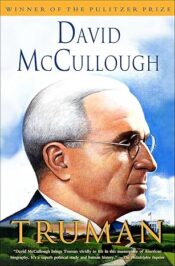
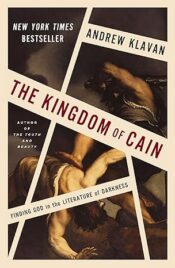

2 comments
Thanks for calling attention to this book and for your conclusion. I knew that FDR had failed the Jews, but I did not have the details that your review provides.
[Reply]
I knew that, too. But I had no knowledge of the details. It was difficult to review because of the scope of the details. I thought it important to convey as many as I could to convey the enormity of the failure. Thank you for your comment.
[Reply]
Leave a Comment